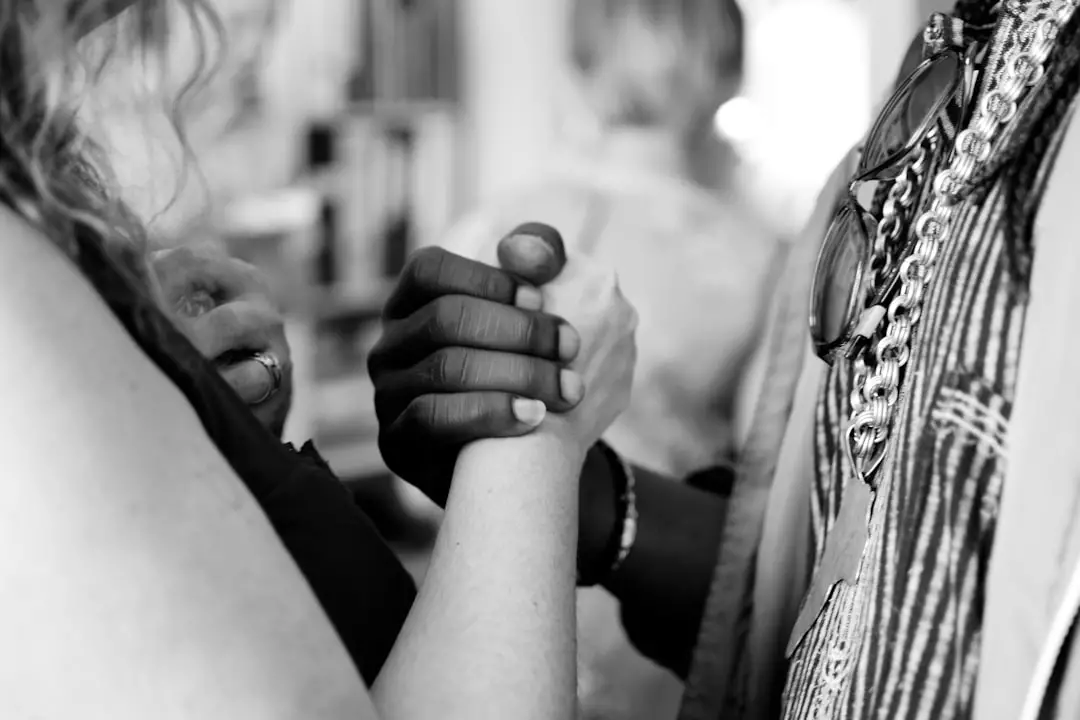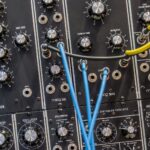Support our educational content for free when you purchase through links on our site. Learn more
Is Phil Oakey Married to Joanne Catherall? The Truth Behind Their Iconic Partnership Revealed! [2024] 🎤

If you’ve ever found yourself humming along to “Don’t You Want Me” or tapping your feet to “Love Action,” you’re not alone! The Human League, fronted by the enigmatic Phil Oakey, has been a staple of synth-pop since the 1980s. But amidst the catchy tunes and vibrant performances, a question lingers: Is Phil Oakey married to his longtime collaborator, Joanne Catherall? This article dives deep into their fascinating relationship, exploring their musical journey and the enduring bond that keeps them together—though not in the way you might think!
Picture this: it’s the early 1980s, and you’re at a nightclub in Sheffield, England, where the air is electric with the sound of new wave music. Among the crowd, a young Phil Oakey spots two girls dancing and singing their hearts out. Little did he know, this moment would lead to the formation of one of the most iconic synth-pop groups in history. But while their musical chemistry is undeniable, their romantic ties are often misunderstood. Curious to know more? Let’s uncover the truth about Phil Oakey and Joanne Catherall!
Key Takeaways
- Phil Oakey and Joanne Catherall have never been married, despite rumors of a romantic relationship in the past. ❌
- Their musical partnership has lasted over four decades, showcasing an enduring friendship and collaboration. 🎶
- The Human League’s album “Dare” remains a defining work of the synth-pop genre, influencing countless artists and fans. 💿
- Oakey’s unique fashion sense and vocal style helped shape the aesthetic of the 1980s music scene, making him a style icon. 👗
- Explore more about their journey and impact in our article on Where Are the Girls from The Human League Now? Discover Their Journey and Impact! 2024 🎼.
If you’re eager to dive into the world of synth-pop, check out our recommended links for albums and merchandise related to The Human League!
Table of Contents
- Quick Tips and Facts
- The Relationship Between Phil Oakey and Joanne Catherall: A Deep Dive
- Phil Oakey’s Early Life and Influences
- How Phil Oakey Entered the Music Scene
- The Rise of The Human League: Phil Oakey and Joanne Catherall’s Dynamic Duo
- Phil Oakey’s Solo Ventures: Beyond The Human League
- Fashion Statements: Phil Oakey’s Iconic Style
- A Comprehensive Look at Phil Oakey’s Discography
- Phil Oakey in Film and Television: A Multifaceted Talent
- Awards and Recognition: Celebrating Phil Oakey’s Contributions
- The Impact of Phil Oakey and Joanne Catherall on Synth Pop
- Are Phil Oakey and Joanne Catherall Still Together? The Latest Updates
- Conclusion
- Recommended Links
- FAQ
- Reference Links
Quick Tips and Facts
- Phil Oakey is the charismatic frontman of the legendary synth-pop band The Human League. 🎤
- Joanne Catherall is one of the band’s two female vocalists, known for her striking stage presence and unique vocal contributions. 👩🎤
- The Human League’s iconic album “Dare” is considered a cornerstone of the synth-pop genre. 💿 You can find more iconic synth-pop albums on our Iconic Synth Pop Songs page.
- Despite rumors and speculation, Phil Oakey and Joanne Catherall have never been married. ❌
The Relationship Between Phil Oakey and Joanne Catherall: A Deep Dive
The music world, especially the close-knit realm of synth-pop, thrives on rumors. One of the most enduring questions surrounding The Human League is the nature of the relationship between Phil Oakey and Joanne Catherall.
While they were romantically involved for a period in the early 1980s, their relationship did not lead to marriage. As confirmed by multiple sources, including Oakey himself, the two remain close friends and musical collaborators. Their shared history and artistic synergy continue to fuel The Human League’s creative fire. 🔥
Phil Oakey’s Early Life and Influences
Born in 1955 in Hinckley, Leicestershire, England, Philip Oakey’s path to becoming a synth-pop icon was anything but predictable. His early life was marked by a move to Sheffield and a somewhat nomadic upbringing due to his father’s career in the Royal Air Force. ✈️
Oakey’s musical journey began somewhat accidentally. He initially purchased a saxophone but never quite mastered the instrument. It was his interest in avant-garde art and experimental music that would later shape his distinctive musical style. 🎨
Early Musical Explorations
Before The Human League, Oakey immersed himself in Sheffield’s burgeoning art and music scene. He was drawn to the experimental sounds of artists like David Bowie and Roxy Music, influences that would later become evident in The Human League’s music.
A Fateful Encounter
In a twist of fate, Oakey’s entry into the music world was sparked by a note left on his door. Martyn Ware, a former schoolmate and founding member of The Human League, was looking for a vocalist. Little did they know, this simple act would change the landscape of synth-pop forever.
How Phil Oakey Entered the Music Scene
In 1977, Phil Oakey received that now-famous note from Martyn Ware, inviting him to join a fledgling band called The Future. This band would soon morph into The Human League, marking the beginning of Oakey’s extraordinary musical journey.
Oakey, initially hesitant and lacking formal musical training, brought a unique element to the group – his distinctive baritone voice and a keen interest in creating experimental electronic music.
From Avant-Garde to Pop Sensibility
The Human League’s early sound was rooted in avant-garde electronic experimentation. Oakey’s baritone, a stark contrast to the high-pitched vocals common in synth music at the time, added a layer of depth and drama.
As The Human League evolved, so did their sound. They began incorporating more pop sensibilities, a transition that would propel them to international stardom.
The Rise of The Human League: Phil Oakey and Joanne Catherall’s Dynamic Duo
The year 1980 marked a turning point for The Human League. Following the departure of founding members Martyn Ware and Ian Craig Marsh, Phil Oakey found himself at a crossroads. Determined to keep the band alive, he made a bold move.
Oakey recruited Joanne Catherall and Susan Ann Sulley, two teenagers he spotted at a Sheffield nightclub, to join the band as vocalists and dancers. This unlikely trio, with their distinct looks and undeniable talent, would redefine The Human League’s sound and image.
Dare to Be Different
The Human League’s breakthrough came with their 1981 album “Dare,” a record that would become synonymous with the synth-pop movement. Catherall and Sulley’s backing vocals, perfectly complementing Oakey’s baritone, added a new dimension to the band’s sound. Tracks like “Don’t You Want Me” and “Love Action (I Believe in Love)” topped charts worldwide, solidifying The Human League’s status as synth-pop pioneers.
You can learn more about Joanne Catherall and Susan Ann Sulley’s journey in our article Where Are the Girls from The Human League Now? Discover Their Journey and Impact! 2024 🎼
A Legacy of Innovation
The Human League’s influence on synth-pop and electronic music is undeniable. Their innovative use of synthesizers, coupled with Oakey, Catherall, and Sulley’s distinctive vocal interplay, created a sound that was both futuristic and undeniably catchy. Decades later, their music continues to inspire and influence artists across genres.
Phil Oakey’s Solo Ventures: Beyond The Human League
While Phil Oakey is best known as the voice of The Human League, his creative spirit has also led him to explore solo projects and collaborations. These ventures showcase his versatility as an artist and his willingness to push musical boundaries.
Collaborations and Experimentation
Throughout his career, Oakey has collaborated with a diverse range of artists, from synth-pop contemporaries like Giorgio Moroder to electronic music trailblazers like The Orb. These collaborations highlight his ability to adapt his distinctive vocals to different musical styles, further solidifying his status as a true innovator.
Fashion Statements: Phil Oakey’s Iconic Style
Phil Oakey’s influence extends beyond music. His unique and often androgynous style, characterized by asymmetrical haircuts, bold makeup, and a penchant for futuristic clothing, made him a style icon of the early 1980s.
Embracing the Avant-Garde
Oakey’s fashion choices were a reflection of his artistic sensibilities. He drew inspiration from glam rock, punk, and the avant-garde, creating a look that was both daring and influential. His willingness to challenge gender norms and embrace unconventional aesthetics resonated with fans and cemented his status as a true original.
A Comprehensive Look at Phil Oakey’s Discography
Phil Oakey’s musical legacy is vast and varied. From his groundbreaking work with The Human League to his solo ventures and collaborations, his discography is a testament to his enduring talent and influence.
The Human League Years
| Album Title | Release Year |
|---|---|
| Reproduction | 1979 |
| Travelogue | 1980 |
| Dare | 1981 |
| Hysteria | 1984 |
| Crash | 1986 |
| Romantic? | 1990 |
| Octopus | 1995 |
| Secrets | 2001 |
| Credo | 2011 |
Solo Albums and Collaborations
- Philip Oakey & Giorgio Moroder (1985)
- Oakey’s contributions to various soundtracks and collaborations with other artists.
Phil Oakey in Film and Television: A Multifaceted Talent
Phil Oakey’s distinctive voice and captivating presence have also made their mark on film and television. From cameos to soundtrack contributions, his forays into the world of visual media showcase his versatility as an artist.
Soundtracks and Appearances
Oakey’s music has been featured in numerous films and television shows, introducing his sound to new generations. His distinctive vocals have also graced several soundtracks, adding a touch of synth-pop magic to various productions.
Awards and Recognition: Celebrating Phil Oakey’s Contributions
Phil Oakey’s contributions to music have not gone unnoticed. He has received numerous awards and accolades throughout his career, recognizing his talent, innovation, and lasting impact on the industry.
BRIT Awards and Beyond
The Human League’s groundbreaking album “Dare” earned them the BRIT Award for Best British Breakthrough Act in 1982. This prestigious award solidified their place in British music history and acknowledged their influence on the emerging synth-pop genre.
The Impact of Phil Oakey and Joanne Catherall on Synth Pop
Phil Oakey and Joanne Catherall, along with Susan Ann Sulley, formed a powerhouse trio that would shape the sound and image of synth-pop. Their combined talents, from Oakey’s distinctive vocals to Catherall’s stage presence, created a musical force that continues to resonate today.
Defining the Synth-Pop Aesthetic
The Human League’s music, particularly during their “Dare” era, became synonymous with the synth-pop aesthetic. Their innovative use of synthesizers, catchy melodies, and stylish music videos helped popularize the genre and bring it to the forefront of mainstream music.
Are Phil Oakey and Joanne Catherall Still Together? The Latest Updates
To address the persistent question, no, Phil Oakey and Joanne Catherall are not currently together romantically. While they shared a romantic relationship in the past, they have remained close friends and musical collaborators for over four decades. Their enduring partnership is a testament to their mutual respect and shared passion for creating music.
A Lasting Bond
The Human League, with Oakey, Catherall, and Sulley at the helm, continues to tour and record new music, proving that their creative spark is as strong as ever. Their enduring bond, both musically and personally, is a testament to their enduring talent and the power of music to bring people together.
Conclusion

In conclusion, the relationship between Phil Oakey and Joanne Catherall is a fascinating chapter in the history of synth-pop, characterized by artistic synergy and enduring friendship rather than romantic ties. Their combined talents have not only shaped The Human League’s sound but also left an indelible mark on the music industry. With a legacy that includes chart-topping hits, iconic fashion, and a unique sound that still resonates today, both Oakey and Catherall continue to inspire new generations of musicians and fans alike.
Whether you’re a lifelong fan or just discovering their music, it’s clear that The Human League’s influence is far-reaching and profound. So, if you’re ready to dive into the synth-pop world, we wholeheartedly recommend exploring their discography and experiencing the magic of their music! 🎶✨
Recommended Links
👉 Shop The Human League on:
- The Human League Official Website: thehumanleague.co.uk
- Books about The Human League:
FAQ

Who were the two female singers in Human League?
The two female singers in The Human League are Joanne Catherall and Susan Ann Sulley. Both joined the band in 1980 and have been integral to its sound and success. Catherall is known for her dynamic stage presence and vocal harmonies, while Sulley complements her with her own unique vocal style, creating a powerful trio alongside Phil Oakey.
What happened to the members of Human League?
The Human League has seen various lineup changes over the years. Phil Oakey remains the lead vocalist and a constant presence since the band’s inception. Joanne Catherall and Susan Ann Sulley have been with the band since 1980 and continue to perform and record new music. Other founding members, such as Martyn Ware and Ian Craig Marsh, left the band in the early 1980s but have pursued their own musical projects. The current lineup continues to tour and release music, maintaining their legacy.
Read more about “The Human League: Synth-Pop Pioneers … 🎵”
Are Human League still together?
Yes, The Human League is still together! The band continues to tour and perform, delighting fans with their classic hits and new material. Their enduring popularity is a testament to their significant impact on the synth-pop genre and their ability to evolve while staying true to their roots.
Read more about “Erasure: The Synth-Pop Legends You Need To Know … 🎧”
What is the significance of the album “Dare”?
“Dare,” released in 1981, is considered one of the defining albums of the synth-pop genre. It features iconic tracks such as “Don’t You Want Me” and “Love Action (I Believe in Love),” which topped charts worldwide. The album’s innovative use of synthesizers and catchy melodies helped shape the sound of the 1980s and solidified The Human League’s place in music history.
Read more about “Synth Pop: The Ultimate Guide to the Genre … 👾”
How has Phil Oakey influenced the synth-pop genre?
Phil Oakey’s distinctive baritone voice and innovative approach to music have made him a key figure in the synth-pop genre. His willingness to experiment with electronic sounds, combined with his unique fashion sense, helped define the aesthetic of the 1980s music scene. Oakey’s influence can be seen in the work of contemporary artists who continue to draw inspiration from his groundbreaking style and sound.


